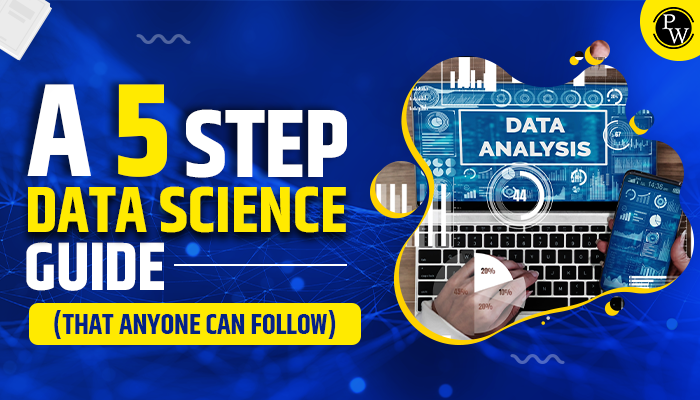Pandas are like the superstars of Python packages when analyzing data. It’s so popular that it’s the go-to tool for anyone working with data, with over 100 million people downloading it monthly. Why is it so beloved? It’s because pandas can do many things when messing around with data.
You can think of pandas as a magical data Swiss Army knife. It can read and write data in many formats, making it flexible for data scientists. Plus, it has these nifty tricks for playing with data. You can use it to group, analyze, and clean up data, which is handy.
If you’re new to pandas, don’t worry. We’ve got you covered with this beginner-friendly tutorial. We’ll walk you through all the basics and show you how to use pandas’ different features. And if you want to dive even deeper, we’ve got a course on panda Foundations that you can check out.
What is Pandas?
Pandas is a super helpful tool in Python for playing around with tables of data. Think of these tables as Excel sheets.
With pandas, you can do all sorts of cool stuff with your data. You can sort it, pick out the parts you want, and even do the math to figure out averages. You can also change how your data table looks and even combine different tables.
Pandas play nicely with other popular Python tools for data science, like:
NumPy: This one’s great for doing math with your data.
Matplotlib, Seaborn, and Plotly help you make awesome charts and graphs.
scikit-learn: It’s like your data’s best friend for machine learning.
Pandas get their name from ‘Panel Data,’ which means handling complex info from various sources. It was born in 2008, thanks to Wes McKinney, and it’s a superhero tool for analyzing data in Python.
When digging into data, you often need to reorganize, clean up, or combine different pieces. Tools like Numpy, Scipy, Cython, and Pandas can help. But we love Pandas because it’s fast, easy, and lets you clearly express your data thoughts. It’s like the data wizard you’ve been looking for
Recommended Course
- Decode DSA with C++
- Full Stack Data Science Pro Course
- Java For Cloud Course
- Full Stack Web Development Course
- Data Analytics Course
Application of Pandas
Pandas are like a secret weapon for handling data, and it comes with some pretty awesome perks:
Made for Python: Python is the king of the hill regarding machine learning and data science, and pandas are like its trusty sidekick.
Shorter Code: When you use pandas, you don’t have to write as much code. It’s like speaking in a more efficient language, so you get the results you want with fewer lines.
Data That Makes Sense: Pandas make your data look pretty and easy to understand. It’s like having a super organized filing system for your information.
Lots of Tricks: It can do many things, like exploring data, handling missing info, crunching numbers, and creating cool charts to show off your data.
Big Data Friendly: Even if you’re dealing with massive piles of data, pandas don’t sweat. It’s like a speed demon, working super fast with datasets with millions of rows and hundreds of columns.
Advantages of Pandas in Python
Pandas is a convenient tool for working with data, and here’s why it’s so awesome:
Python’s Best Friend: Python is like the superstar of programming languages for machine learning and data science, and Pandas is its trusty sidekick.
Shorter Code, Bigger Impact: When you use Pandas, you can get a lot done with just a few lines of code. It’s like writing a short and sweet recipe that gives you exactly what you want.
Data That Makes Sense: Pandas help your data look neat and tidy. It’s like having a super-organized closet where you can find everything easily.
A Bag of Tricks: It’s not just a one-trick pony. Pandas can do many things, from exploring data and handling missing info to crunching numbers and creating cool charts.
Big Data? No Problem: Pandas don’t break a sweat even when dealing with mountains of data. It’s like a super-fast data ninja that can handle millions of records and hundreds of columns, depending on your computer’s power.
Characteristics of Pandas
Pandas are like data superheroes, and here are some of their superpowers:
DataFrame Magic: Pandas has an awesome DataFrame that’s super quick and efficient. It can handle data with both regular and custom ways of organizing stuff.
Shape-Shifting Data: You can use pandas to rearrange and twist your data into different shapes, making it easier to work with.
Grouping for Fun: When you want to crunch numbers and do fancy stuff with your data, pandas can combine it cleverly.
Data Detective: It’s like a detective that finds missing pieces of data and fits them right into where they belong.
Time Keeper: Pandas can also handle time-related data, which is cool if you’re into tracking trends over time.
All Data Types Welcome: Whether you’ve got numbers, weird tables, or time-based info, pandas can handle it all.
Data Gymnastics: You can do all sorts of tricks with your data using pandas, like picking out specific parts, chopping it up, and reshaping it.
Friends with Other Tools: Pandas like to hang out with other cool data libraries like SciPy and Scikit-learn so that you can use them together for even more power.
Speed Demon: It works fast, and if you want to make it even faster, you can use Cython.
Python Pandas tutorial for data science FAQs
What is the purpose of Python pandas?
Ans. Python pandas allow for easy analysis, cleaning, exploration, and manipulation of data sets. Created by Wes McKinney in 2008, the name "Pandas" is a reference to both "Panel Data" and "Python Data Analysis".
What is the difference between pandas and NumPy?
Ans. Pandas and NumPy are powerful tools for data analysis. Pandas handles tabular data and offers DataFrame and Series tools, while NumPy excels with numerical data and boasts the Array object.
What are NumPy and pandas in Python?
Ans. Pandas and NumPy are widely used Python libraries for data analysis. They offer a broad range of functionality, from simple slicing and dicing to complex reshaping and grouping. These libraries make data manipulation efficient and intuitive, regardless of dataset size.
What is the full form of pandas?
Ans. PANDAS is a Pediatric Autoimmune Neuropsychiatric Disorder associated with Streptococcal Infections. It is diagnosed in children with OCD or tic disorder after a strep infection.
Recommended Reads
Data Science Interview Questions and Answers
Data Science Internship Programs







